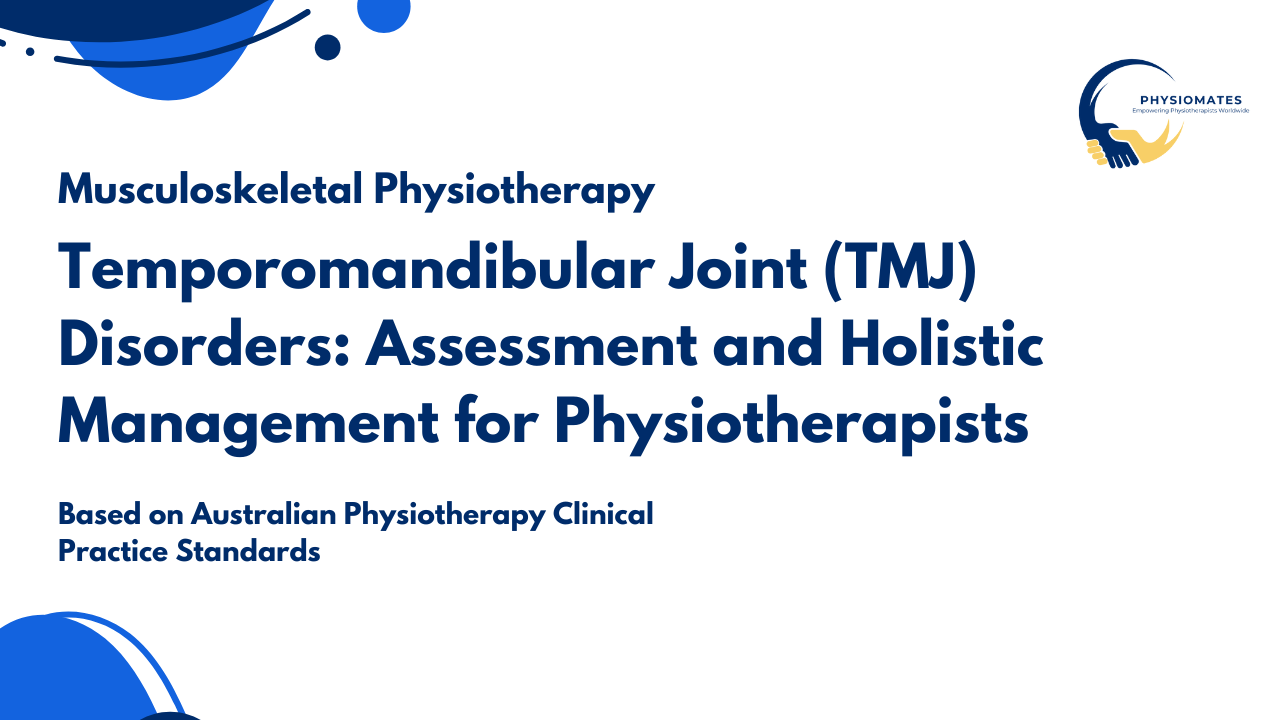
About Course
Temporomandibular Joint (TMJ) disorders are a common but often under-recognized cause of neck pain, headaches, and facial discomfort. Given the TMJ’s unique anatomy, frequent use in daily activities, and close connection to posture and stress, physiotherapists play a key role in identifying and managing dysfunction effectively.
Thank you for reading this post, don't forget to subscribe!This pd course equips physiotherapists with the knowledge and skills to assess TMJ anatomy and biomechanics, perform structured evaluations, and recognize red flags. It also explores the impact of lifestyle factors such as stress, clenching, and posture, alongside practical strategies including manual therapy, relaxation techniques, and jaw exercises.
With a strong focus on holistic and multidisciplinary care, participants will learn to integrate physical, psychosocial, and lifestyle considerations into patient management—ensuring sustainable, patient-centred outcomes in TMJ rehabilitation.
About Musculoskeletal Physiotherapy Program Instructor

The musculoskeletal physiotherapy program is led by Mustufa Kagdi, MACP, APAM, a highly accomplished Titled APA Musculoskeletal and Sports & Exercise Physiotherapist based in Australia. With nearly two decades of experience and expertise in advanced manual therapy, biomechanics, and pain science, Mustufa has successfully mentored physiotherapists at all levels.
Having completed his Master of Manual and Sports Physiotherapy at the University of South Australia, Mustufa brings a wealth of knowledge about Australian physiotherapy practice and standards. His interactive teaching style and deep understanding of clinical reasoning make this program a must for international physiotherapists aiming to thrive in Australia.
Course Content
Lesson 1
Topic 1
32:22
Lesson 2
Lesson 3
Assignment
Student Ratings & Reviews

